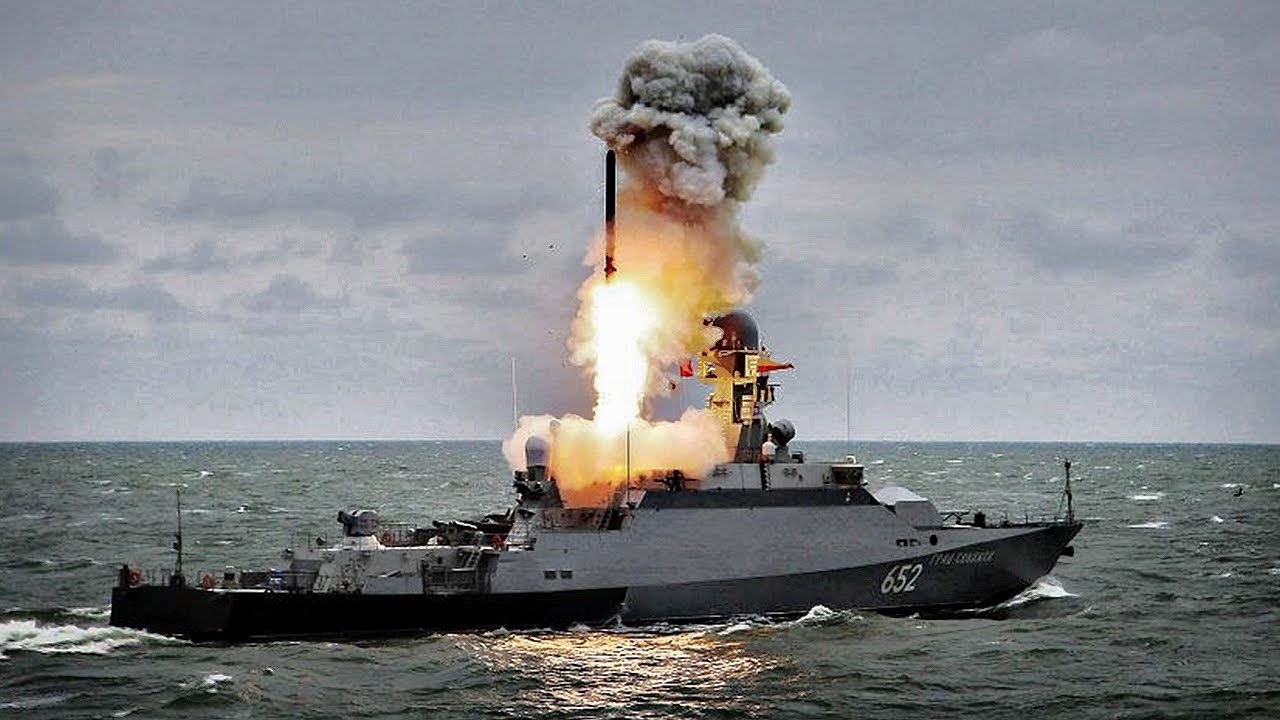Russia is running low on precision-guided missiles to attack Ukraine. Now, the Ukrainian military believes Vladimir Putin’s forces are removing nuclear warheads from cruise missiles and firing those at targets in Ukraine. A Ukrainian website, the Defense Express, first reported this development, although it has not been verified by an independent source. If true, it shows that Russia is pulling out all the stops to halt Ukrainian advances and lay waste to civilian targets.
A Dummy Cruise
Cruise missiles without nuclear warheads were reportedly part of a larger attack of conventional weapons and loitering munitions on Nov. 17 in areas including Kyiv, Dnipro, Kharkiv, and Odesa oblasts. On that day, friendly forces were able to shoot down a handful of the incoming enemy projectiles and unmanned craft.
One of the cruise missiles destroyed was an air-launched Kh-55, which is normally part of Russia’s nuclear arsenal. Mysteriously, this weapon had no warhead – either nuclear or conventional. A non-nuclear block was fastened to the missile where the warhead would normally go. This shows that Russia is running so low on cruise missiles that they are firing them with no warheads and hoping that the kinetic blast on contact will be enough to take out a target.
Kh-55s are usually launched from the Tu-95MS Bear-H bomber and the Tu-160 Blackjack bomber. The Kh-55 is a Cold War relic, having first been introduced to service in 1983. It has a range of over 1,500 miles and can be fired at altitudes up to 30,000 feet.
Since the missile without a warhead is not as effective as one with a fully loaded charge, it is possible that Russian forces may be using the repurposed missiles as decoys to fool Ukrainian air defenses. They are trying to force the enemy to shoot valuable surface-to-air missiles at dummy targets.
One could also interpret the events as Russia trying to scare Ukraine and NATO by showing they have the ability to fire nuclear-capable missiles that can land in danger zones in large cities. The dummy missile would be seen as carrying a mock nuclear warhead.
Russia Missile Move Against Ukraine: Why Did They Do It?
Russia probably removed the nuclear warhead for these reasons – to make up for a shortage in conventional precision-guided weapons, to use as a decoy, and to show the Americans and their allies that the Russians are willing to fire nuclear-capable missiles to rattle their enemies.
In October, Ukrainian Defense Minister Oleksii Reznikov told the New York Times that Russia has used around two-thirds of the missiles it had before the war. Reznikov has calculated that Moscow owns only 609 missiles left, out of 1,844. Russia has about 50% of its air-launched cruise missiles left. They are reportedly running out of supplies of the newer Kh-101 cruise missiles.
I am leaning toward the belief that Russia wants to show the world it can fire a missile that would normally have a nuclear warhead because it wants to strike fear into Ukraine and its allies. It is not clear that it will resort to this tactic again in the future, but it is plausible. If Russia is running dangerously low on missiles, it would seem that removing the nuclear warhead and wasting a delivery system is a waste of resources. This is indeed a mystery that we will monitor as Russia steps up its attacks on critical infrastructure and other civilian targets.
Expert Biography: Serving as 19FortyFive’s Defense and National Security Editor, Dr. Brent M. Eastwood is the author of Humans, Machines, and Data: Future Trends in Warfare. He is an Emerging Threats expert and former U.S. Army Infantry officer. You can follow him on Twitter @BMEastwood. He holds a Ph.D. in Political Science and Foreign Policy/ International Relations.

